
Tips for Using 2D Maps in e-learning
The many advantages of putting learning content into a map structure
Learning content should be inspiring, if not utterly captivating. Ideally, it should be branded and look cool. And it needs to be engaging for the video gamer generation, without alienating more conventional learners. That’s a lot of boxes for modern learning experiences to tick.
Consequently, many companies and organisations are turning to map-based training. Even so, it’s a fairly new area, and the e-learning applications of maps may not be immediately obvious, despite the ubiquity of Google Maps.
That’s why we have put together this article. It explains the difference between 2D and 3D maps and illustrates the structure and advantages of 2D map-based training.

Differences between 2D and 3D maps
Arguably the most important difference between 2D and 3D maps is the browser performance required. 3D maps are rendered live in the browser, so they require more computing power and a very stable network or internet connection. The upside is that 3D maps allow dynamic perspectives: users can switch perspectives within the map.
A 2D map does not allow dynamic perspectives, but the viewer can create the impression of changing perspective by moving relative to the map. This 2D principle is employed in many strategy games, for example. The map is based on images in which it is not possible to change perspectives. The advantage is that fairly large story/learning worlds can be shown without requiring a lot of browser performance.

2D animation
2D does not necessarily mean static. Within a 2D world, it is possible to have individual elements that are animated and dynamic. This is called 2D animation, and it lends life and vibrancy to 2D maps. It is even possible to integrate 3D graphics into 2D maps.
The introduction: arriving on the map
As with most learning experiences, it’s a good idea to start with an introduction. The introduction can appear or pop up on the map in the form of a chat window or a specially created page that briefly outlines the storyline and subject matter of the training session. It is advantageous here to explicitly tell the learner what the training task will involve, and what their objectives are. The benefit of showing an introduction directly on the map at the outset is that the learner does not need to leave the learning world and therefore does not lose focus.
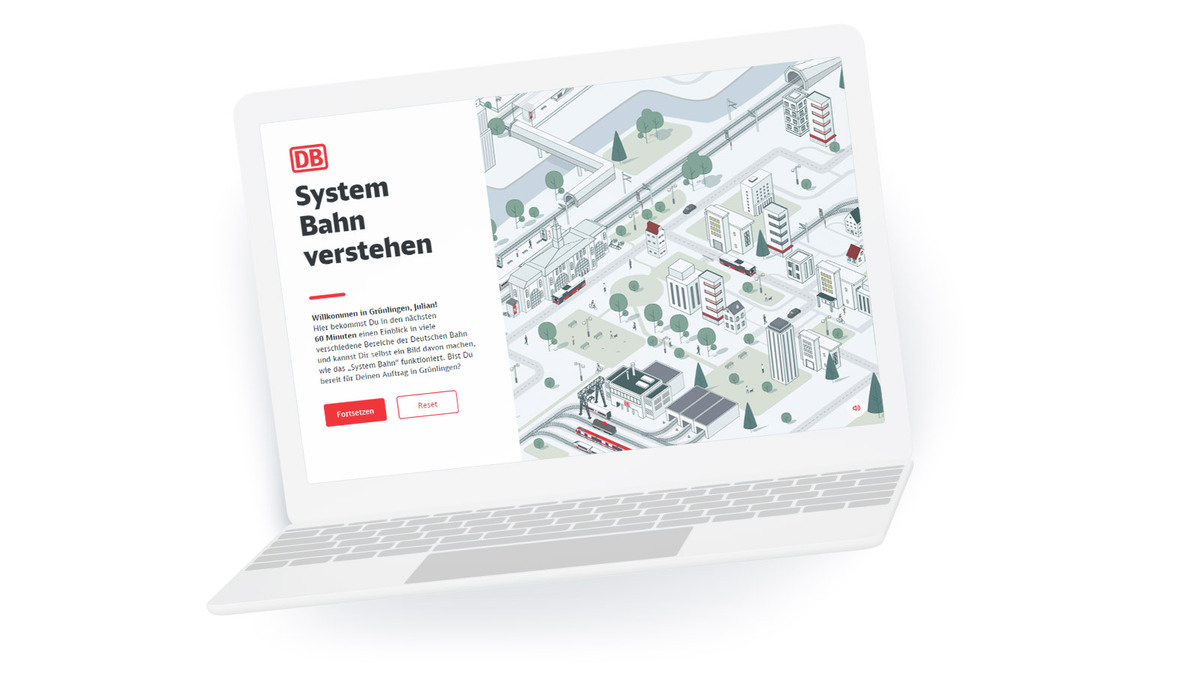
2D Map Training Deutsche Bahn
The main narrative: read the map
It is vital that the main part of the session is self-explanatory. This means the map must be intuitive to use. A certain degree of in-map guidance can be achieved by unlocking individual tasks step by step. That way, learners intuitively know the correct task order, without having to be explicitly told. Crucially, this approach allows learners to discover the learning content for themselves, i.e., exploratively. The navigation leads via the 2D map to various locations that the learner can ‘visit’. An example would be where the map shows a building that the learner can click on and enter in order to progress to the next task or access a learning nugget.
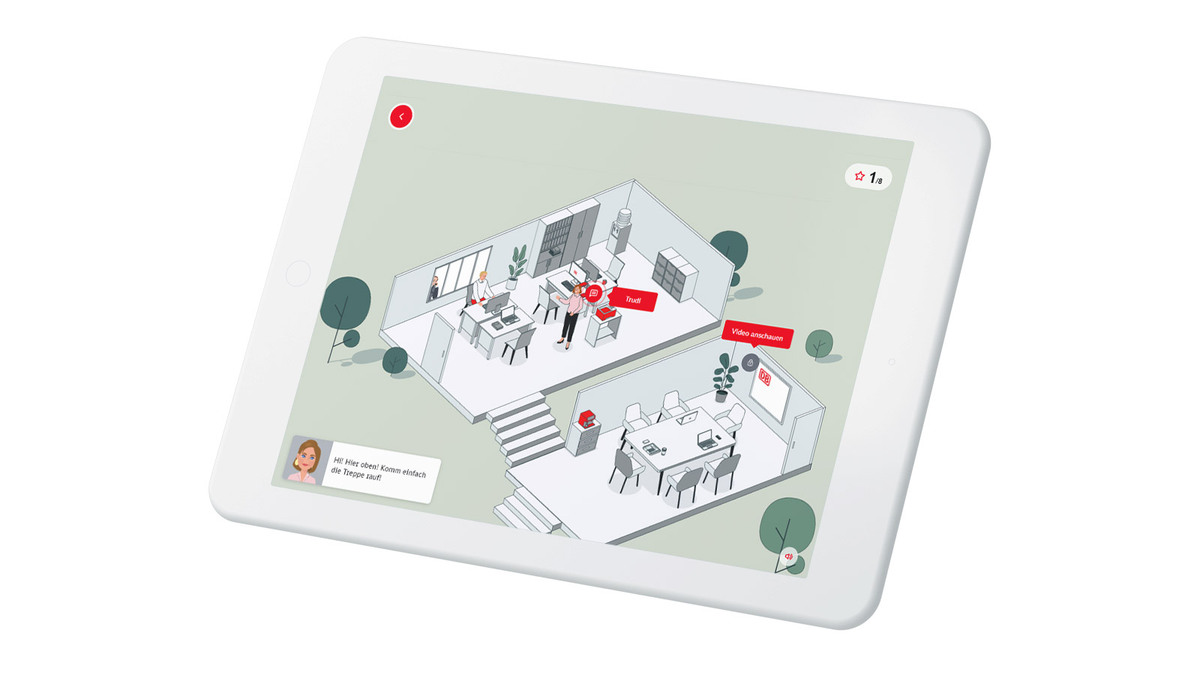
2D Map-Training Deutsche Bahn
Interstitial and achievement screens can be used to lend further structure to the main narrative by appearing as pop-ups overlaying the map. They can provide orientation by showing learners their next tasks, highlighting their progress, or making them aware of further options. The whole learning experience can be made even clearer by adding jump labels to individual locations on the map. These can be used to help the learner navigate from tasks to their associated learning content.
GOOD TO KNOW
Learners should not need to leave the map (the learning world) at any point. Everything they need in order to achieve their objectives should be contained within the map. This can be achieved, for example, by using chat windows that open directly on the map, or by showing learning nuggets, content items and hints as overlays on the map.
The conclusion: leave the map
In 2D maps, just as in other learning settings, it is important to clearly mark the conclusion of learning units and tasks so that learners know they have successfully completed the section in question or indeed the entire training session. There are many different ways of doing this. The key is to ensure the method chosen fits with the training session’s overall storyline. For example, you can use a list of checkpoints which is then displayed at the end with all tasks checked off. Or you can show a notification in the chat window.

Success message at the end of a training session
Questions?
Can a map-based training session also be short?
To retain the map’s explorative dimension while at the same time creating a training session that can be completed within a short space of time, you can reduce the amount of learning content, streamline the user experience, or confine exploration strictly to key locations on the map. The main thing is to maintain excitement while keeping the learning purposeful.
How gamified can a map-based training session be?
The primary focus must be on the learner experience, so the map should not contain any unnecessary actions or locations.
Surely map-based training sessions are very labour-intensive to produce?
Not necessarily. The total overhead can actually be relatively low, as the world created by a 2D map makes a relatively large contribution to creating an exciting learning experience. It is possible to reduce the design overhead that goes into learning nuggets/subpages by integrating them into a 2D map.
But isn’t that really expensive?
The 2D map format does not necessarily require more design work by our experts, so it is a very good alternative to 3D maps, even for limited budgets.
What are the other advantages over 3D maps?
Good performance, low overhead, faster page loading.

Rapid Content Development
We want things now: fast food, coffee to go, messenger services, online shopping … we no longer have time. Companies have also clocked onto this trend, and want to stay up to date with their training courses.

Gamification takes corporate learning to a new level
The fact that Game Based Learning works as a motivational booster for e-learning is already rooted in childhood. We have summarized the most common types of games and practical examples for you.
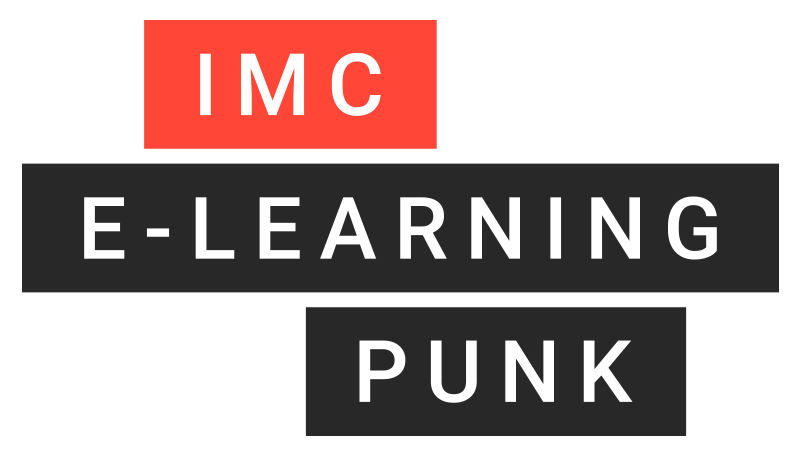
Contact person
I joined the imc newsroom team in 2021. As a journalist my heart beats for content and storytelling.
I’m excited to figure out how e-learing and digitization affect the future of work. My task is to create content to talk about and I’m always looking for trends.
Privately I love to travel and eat Tapas.
Topics: E-Learning Trends, Corporate Social Responsibility, Press and Influencer Relations

This year’s e-learning content trends
Interview with Falk Hegewald, Director E-Learning at imc
Out with the old, in with the new. A new year brings new content trends that nobody involved in corporate learning can afford to ignore. Together with Falk Hegewald, Director E-Learning at imc, we are taking a look at the coming year’s crucial topics for companies.

INFO
Falk Hegewald started out in design: He studied graphic design and followed that up with game design. But when imc introduced him to the e-learning sector nine years ago, he decided to stay put. “Back then, I was attracted to the idea of creating something new in this world of e-learning. It was all still very 1990s in those days,” says Hegewald. At imc, he is responsible for custom and off-the-shelf content worldwide.

Now, we’re really getting started: 3D, VR and Metaverse
Falk Hegewald is confident that the upcoming big changes are here to stay – well beyond 2022. Many major corporations are driving the development of virtual reality and metaverse. Nike recently acquired a design studio that “produces” NFTs and virtual running shoes.
“The key driver for metaverse is to create a world where you can play. However, that world will also feature workspaces. We are already entering that world with virtual meeting rooms,” Hegewald explains. “At imc, we are taking that as an incentive to develop the 3D aspects of our content to gain a head start in the creation of such digital worlds and environments.”
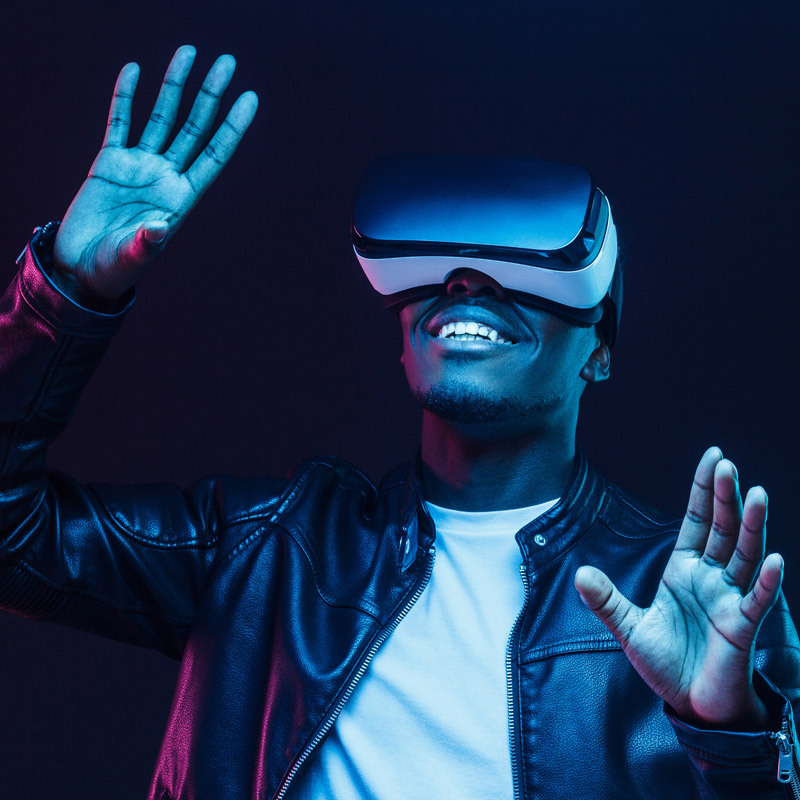
INFO
Metaverse:
Metaverse describes an immense collective virtual space formed when real and virtual worlds merge. A metaverse comprises both open and closed platforms. Companies can create their own worlds as well as digital products, and even sell them there – just like in the real world.
Engaging content and adaptive learning
This year will also see a strong focus on more engaging content that both motivates and captivates the learner. Not everything needs to be a game, Falk Hegewald claims: “You can also use novel engaging activities and formats. There is already demand for inspiring training, as companies have realised that they need to get more buy-in from their employees. As a premium content provider, we can deliver that.”
Adaptive learning will also be very relevant for content in the year ahead. In the past, the focus was on learning management systems featuring intelligent interfaces that facilitate appropriate distribution of training courses. Now, we are moving towards skill management through content. Falk Hegewald is confident that adaptive e-learning content will be in demand this year. “You rarely need everyone to learn everything. Employees with different levels of knowledge attend the same training course. Testing prior knowledge and leveraging suitable tools to assign content becomes a whole lot easier if the content is adaptive, too.”
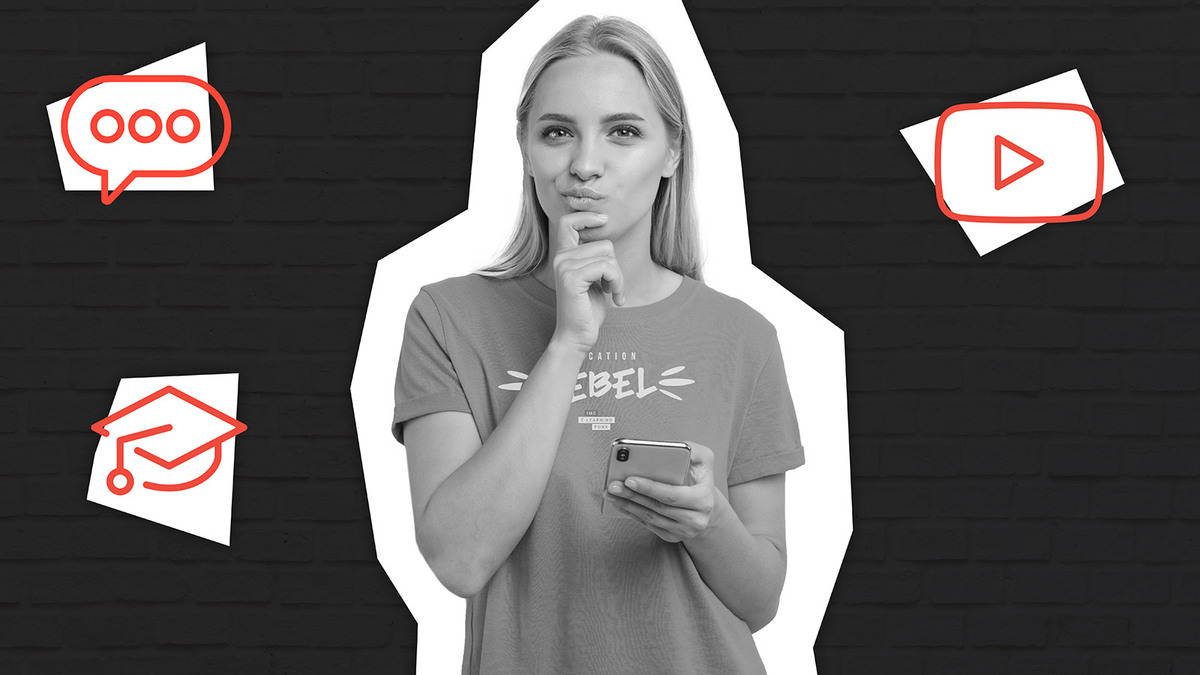
Adaptive learning
Premium off-the-shelf content will be big next year
Last year, Falk Hegewald was particularly excited about the "Cyber Crime Time"awareness game, which deals with IT security issues by letting the learner take on the role of a hacker. Step by step, they learn the most common cyber-attacks first hand. “This goes well beyond your typical off-the-shelf content, be that from us or from our competitors. We wanted to create something that gets the employees’ attention.”
Yet, that was only the first step: This year, Cyber Crime Time will be expanded to include additional training courses and learning nuggets – smaller learning units. “Our aim is to create an entire training world for IT security so Cyber Crime Time remains exciting for our customers,” Hegewald explains.
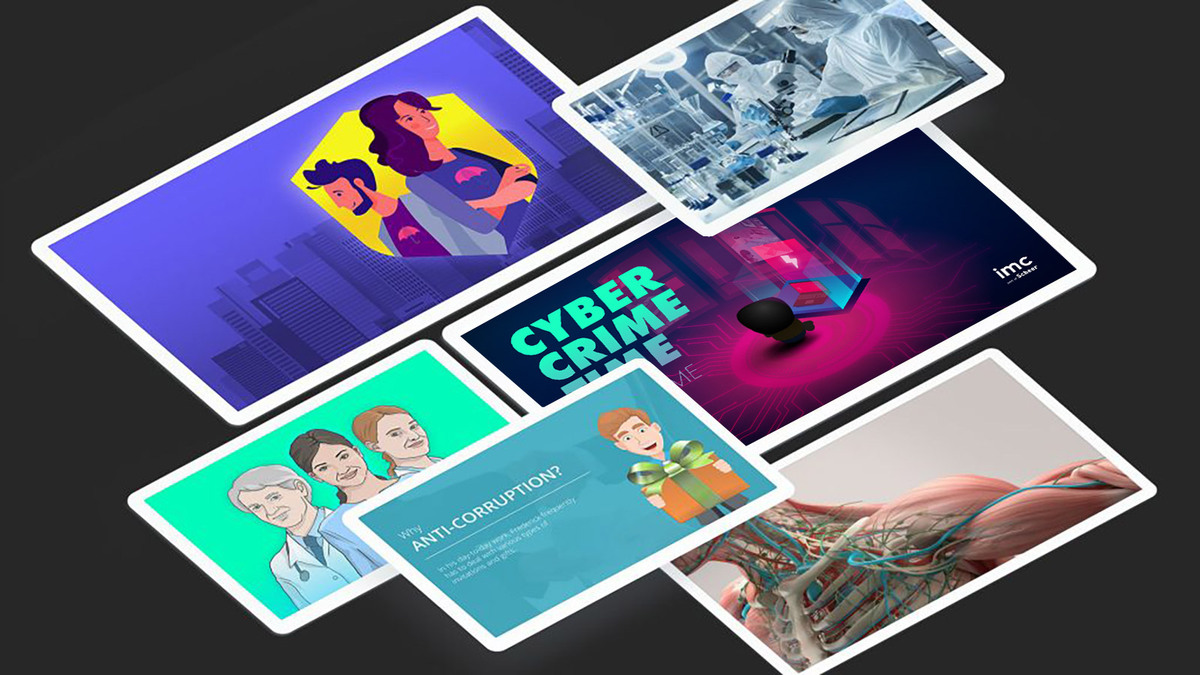
Premium Standard Content of imc
Falk Hegewald’s department also had their hands full designing custom content for corporate clients throughout 2021: They created a wide range of complex learning content, as well as complete digital learning journeys – covering everything from onboarding through corporate strategy to exciting sales training for customers like Jägermeister. “Generally speaking, many of our customers were more daring in their content design and presentation this past year. We love that trend and believe there is room for even bolder creative moves in the stories and the design,” says Hegewald.

The Jägermeister Master Academy
The war for talents goes into the next round
Companies are forever looking to attract talents and retain them long-term. The right onboarding and employee development are playing an ever-greater role in this quest.
To feed into that ambition, it is important that professional development content is up-to-date and dynamic. Falk Hegewald explains: “Young talents joining the job market are used to a different pace, they use media in a totally different way. It can become very challenging for a company to keep them engaged.”
That is why a key aspect will be to make onboarding and professional development courses accessible on all devices, enabling the latest generation of employees to learn anytime and anywhere.
As Head of the Division, Falk Hegewald always gets excited when new colleagues bring fresh and interesting ideas, as is often the case when they join straight out of university. “This type of inspiration is vital. As a content department, we always need to keep an open mind for new ideas.”

As Content Director, what are you looking forward to this year?
“Exciting new customers and new client projects. Personally, I would really like to visit the other imc locations again and meet the employees I have not yet had any personal contact with.”
Well, here in Saarbrücken, we are looking forward to meeting you, Falk!

Gamification takes corporate learning to a new level
The fact that game-based learning works as a motivational booster for e-learning is already anchored in childhood. We have summarised the most common types of games and practical examples of possible applications for you.
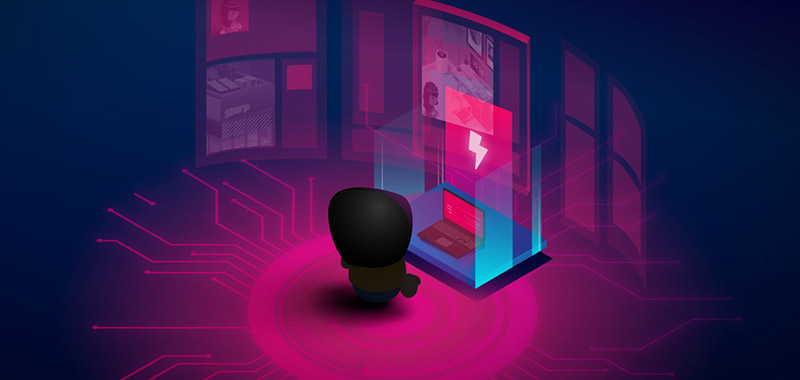
Awareness trainings are the key to success in the prevention of cyber attacks
Cybercrime is on the rise. It is no longer just a handful of criminal hackers who want our data and, unfortunately, our money. Learn in this article how awareness training can improve your IT security.

Contact person
I joined the imc newsroom team in 2021. As a journalist my heart beats for content and storytelling.
I’m excited to figure out how e-learing and digitization affect the future of work. My task is to create content to talk about and I’m always looking for trends.
Privately I love to travel and eat Tapas.
Topics: E-Learning Trends, Corporate Social Responsibility, Press and Influencer Relations

Six vital modules for every digital onboarding concept
A blueprint for efficient onboarding with lasting impact
Different companies have different requirements for their onboarding process. They might want to use modular and future-proof concepts, achieve cost and time savings compared to current approaches, or enable employees to start working sooner. Moreover, the pandemic has accelerated the need for digital onboarding as face-to-face training has not been possible. Despite the pandemic introducing more relaxed, remote working arrangements, hybrid work arrangements will become the norm; hence digital onboarding will become the tool to deliver a great first experience to new employees.
Yet, companies are not the only stakeholders – Employees have their own expectations of the onboarding process. This is why many HR managers are deciding on learner-centric onboarding that revolves around the needs of new employees:
“I want to know what makes my company tick,” – “I want to feel like I’m becoming part of the community,” – “I want to improve my skills.”
To achieve that, your onboarding needs a framework that provides guidance and an emotional connection while assessing the current state of knowledge and developing expertise.
This article explains how to design an exciting and creative digital onboarding process with new and existing e-learning content, even without a learning management system (LMS).

An illustration of the key building blocks
Our experts are always developing concepts suitable for a wide range of requirements. Get a head start with our “best of” compilation. Let’s imagine this situation: You want to digitise five days of basic training that has always been conducted on site. You are looking at a very diverse group of participants. The target group for this training extends beyond new colleagues, and also includes “old hands,” as well as some external service providers. They each have a different level of prior knowledge, different hardware, and different levels of access to a learning management system (LMS). Some might not have any access at all.
How do you satisfy them all? The solution is to design a structured framework for digital onboarding. Our experts recommend getting a head start with these 6 modules:
- A central (digital) starting point
- A daily virtual kick-off
- The self-learning phase
- A virtual hands-on workshop
- The online quiz
- A learning diary
Together, these six modules form a foundation. Let’s look at each element separately.
My Digital Onboarding Kit – The modules in detail
The central starting point could, for example, be a browser-based landing page created especially for onboarding, a homepage in the company intranet, a portal page (in the LMS) or an interactive PDF. It is important that the employees can see at a glance what is on the agenda for the day when they arrive for their onboarding. Think of it as a modern timetable. Every new employee needs structure, and an overview page is an easy way to provide that.
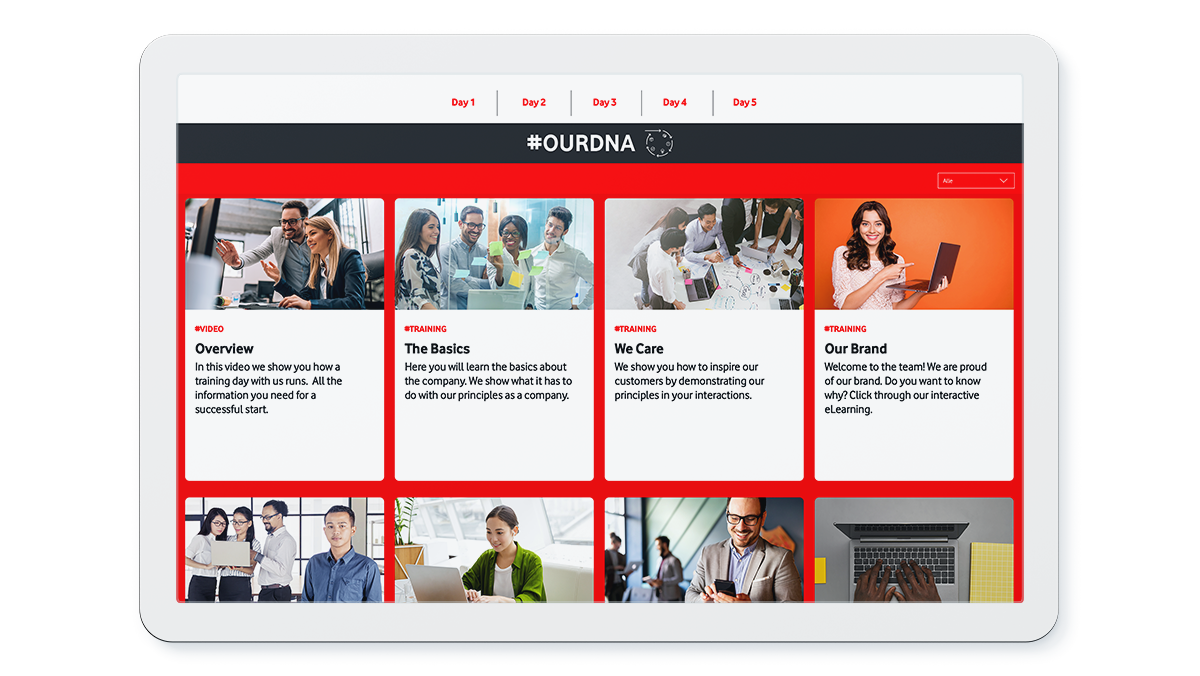
Portal page as central starting point
The virtual kick-off at the beginning of each training day serves to agree and discuss the agenda and objectives for the day together with the trainers. The focus should be on social onboarding, on promoting interaction between the participants. Our experts recommend a playful warm-up with surveys, icebreakers, or activation games aka energisers. Why not play a round of “I packed my bag” to get started? It is helpful to establish a meeting netiquette, specifying that cameras and microphones must be switched on.

virtual kick-off
In the self-learning phase, each learning format achieves a specific objective. For example, digital performance cards help employees gain knowledge with a certain focus, and then apply it in simulations as part of web-based training. Virtual scavenger hunts help them familiarise themselves with the company or the intranet. Companies can also integrate existing training courses or offer individually tailored or branded content. Variation between different e-learning formats has proven particularly effective.
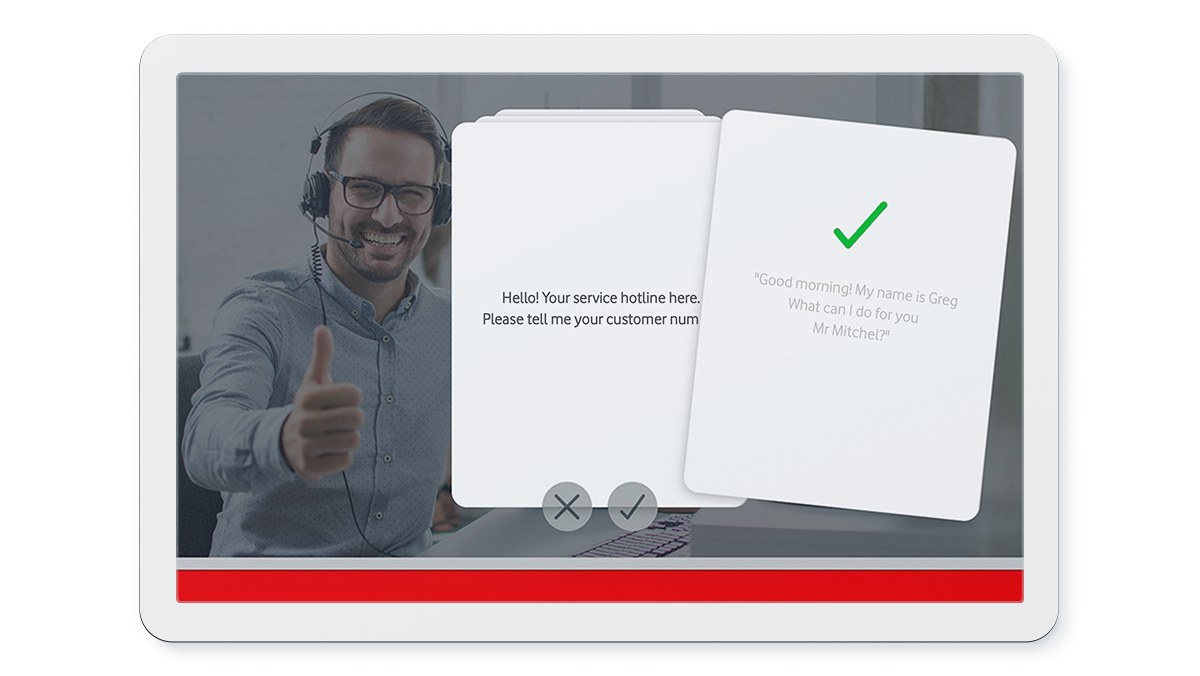
Performance cards
The hands-on workshop moderated by the trainers gives the employees an opportunity to apply what they learned and clarify any questions or uncertainties. This could include polls, multiple choice questions in the group chat or whiteboards.
The online quiz concludes the day. One great example is the BizQuiz. It provides participants with feedback on their learning progress and gives them the opportunity to close any knowledge gaps.
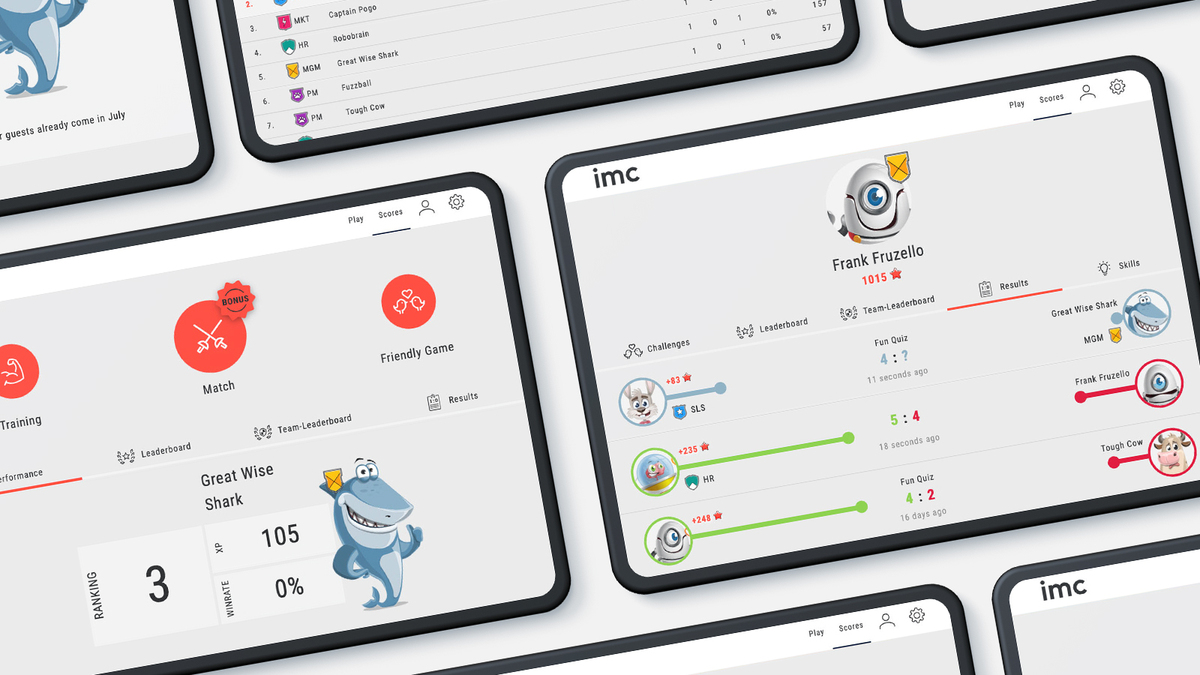
quiz app: Biz Quiz
Finally, the learner makes their personal entry in the learning diary. An easy way to integrate the diary is to design a page in the intranet, a document in the cloud or a form that mirrors the central starting point, and which each participant completes for themselves. This serves to summarise the core messages from the workshops or formulate the questions and tasks for the self-learning phase, as well as compiling key insights from the training courses. The personal learning diary thus becomes an individual reference resource participants can look things up in long after their onboarding.
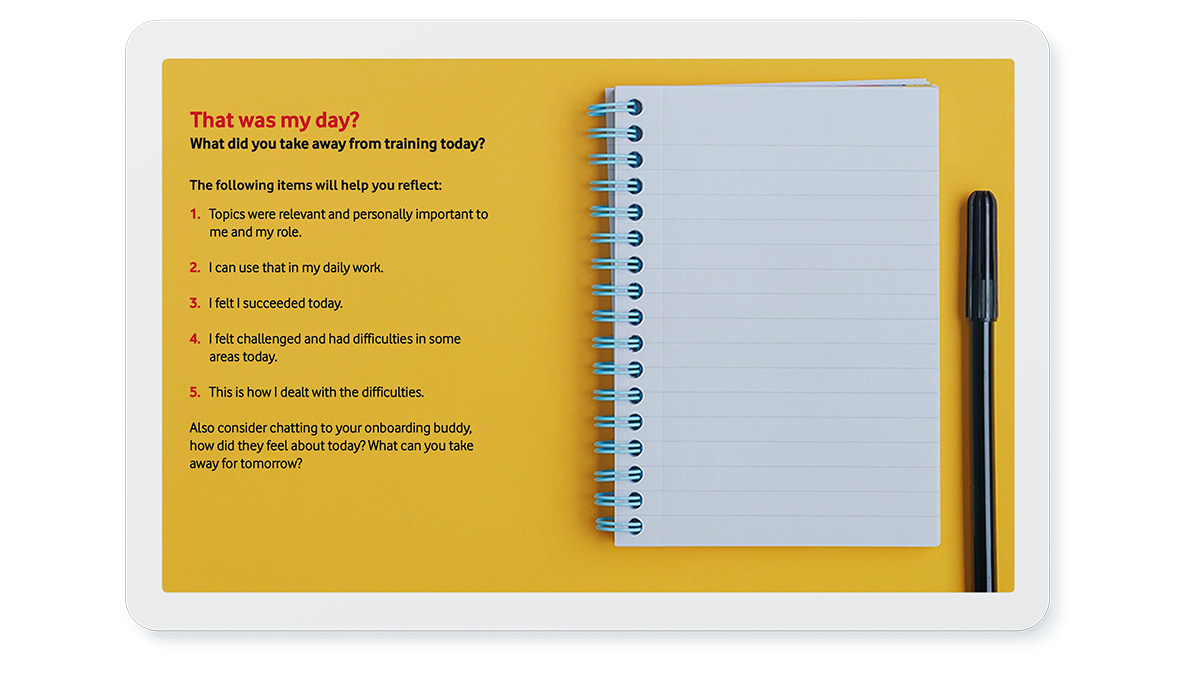
Learning diary
GOOD TO KNOW
Time investment for trainers is automatically reduced
The targeted use of digital learning formats in the self-learning phase reduces time investment for trainers during digital onboarding. That saves costs and resources. Following this 6-module approach, trainers are only required for the kick-off and the workshop phase.
Digital vs hybrid onboarding
Digital onboarding works. This approach can absolutely be appropriate while also saving resources. Nevertheless, some onboarding processes are easier to realise in a hybrid format. Of course, that does require new employees to travel to the location.
One example for a good hybrid solution would be to communicate theoretical content through online self-study, and then bring participants on site to carry out specific actions, such as operating machinery. The face-to-face part of the training can then be utilised for practical exercises and to clarify questions.
Similarly, a dual approach helps with understanding the corporate culture. For instance, companies might invite new employees for an intro day before their first day of work. Make the most of this day by asking colleagues to talk about how they realise the values, objectives, and mission of the company in their daily work. This meeting can also be leveraged to establish an emotional connection with new recruits and build enthusiasm for the company.
In our experts’ experience, it is not as clear-cut as one approach being universally better. Rather, it is about selecting suitable formats and linking them in a helpful way based on the new employees’ needs and the learning objectives.
We linked a special treat for anyone interested in hybrid onboarding:

Digital Learning Journey
Reaching the destination with the right blend of formats: Digital learning journeys capitalise on the strengths of each learning format to create a motivating learning experience.

LMS Hot Topics: Science fiction or near future?
Onboarding can already be integrated into existing learning management systems. But Hanna's example shows that this is only the beginning.

Contact person
I joined the imc newsroom team in 2021. As a journalist my heart beats for content and storytelling.
I’m excited to figure out how e-learing and digitization affect the future of work. My task is to create content to talk about and I’m always looking for trends.
Privately I love to travel and eat Tapas.
Topics: E-Learning Trends, Corporate Social Responsibility, Press and Influencer Relations
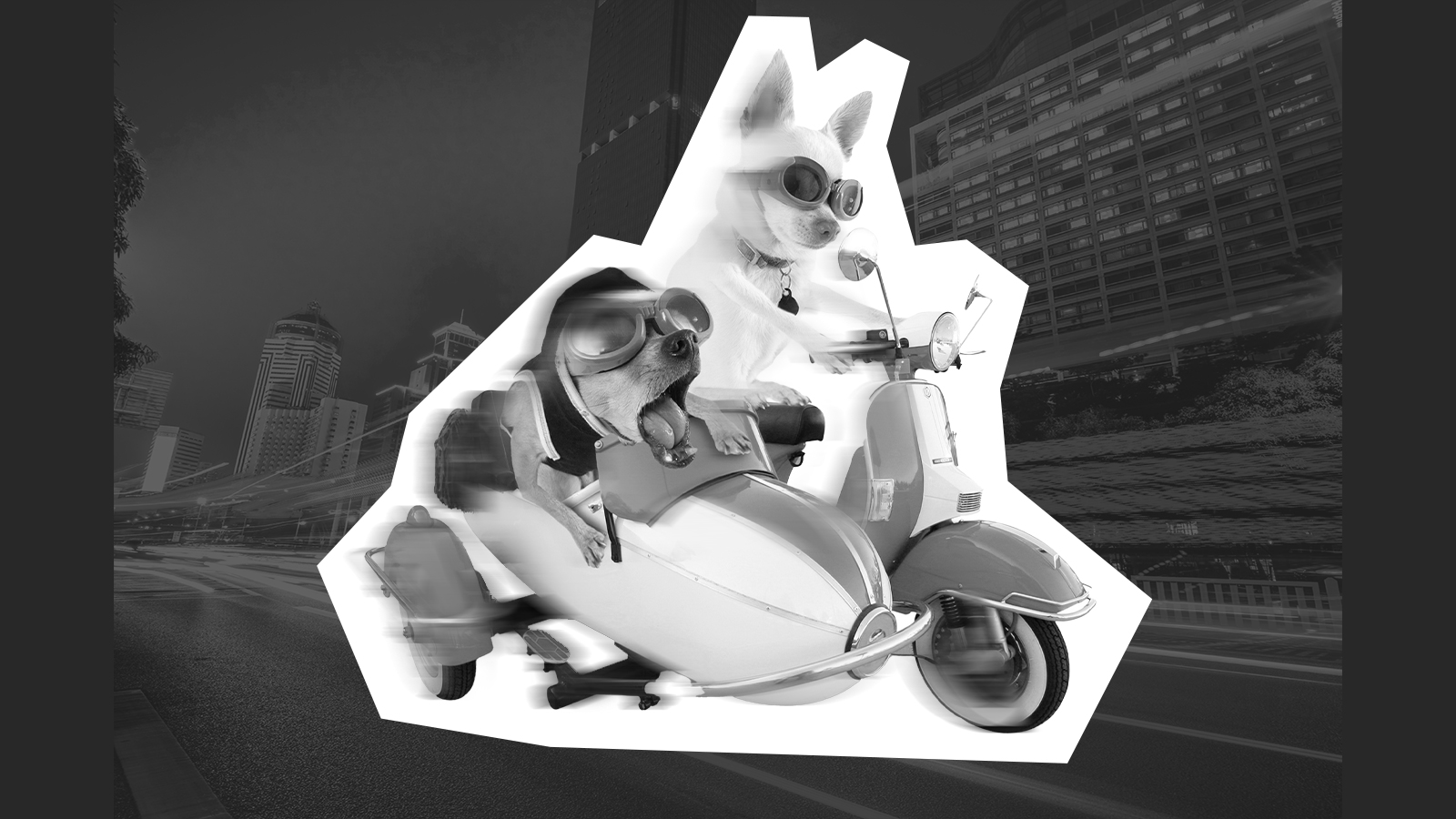
Rapid Content Development: Creating E-Learning Trainings Quickly
Why fast creating digital trainings is possible but risky
... and suddenly, the training had to be scrapped. Many companies made that experience in lockdown number one. Employees needed to be trained, but the training was postponed due to Corona. Again. And again. However, most types of training simply cannot be endlessly postponed or even be cancelled altogether.
A pragmatic and swift solution is needed – training needs go where the employees are: their home office. For many companies, that means digitising learning content, and doing so quickly. They need rapid content development. This trend was already apparent before Corona, but the pandemic greatly increased the demand for the technologies that facilitate rapid content development.
This article explores what qualifies as rapid content development, what type of learning content is suitable for rapid digitisation, and what risks a strong focus on speed entails.
INFO
Definition: Rapid content development (RCD) is an agile model for teaching system design, comprising a preparation phase, an iterative design, template-based re-usable components and e-learning tools for quick and cost-efficient provision.
Speedy please – but without quality loss
We want things now: fast food, coffee to go, messenger services, online shopping … we no longer have time. Companies have also clocked onto this trend, and want to stay up to date with their training courses. An ever-increasing amount of knowledge is expected to be available almost instantly on various media while maintaining a high quality standard and staying within budget.
The solution: rapid content development. But wait a minute! No matter how fast you go, the quality of the overall learning solution must not be compromised. That’s why learning experts like Eva Lettenbauer always look at the big picture.

Eva Lettenbauer, Specialist Learning Experience Design at imc
Hi Eva, thanks for “quickly” making time for us. How did you experience the rapid content development hype last year?
Especially at the beginning of the pandemic, many companies were facing the challenge of having to digitalise their face-to-face training in a short space of time. However, directly transitioning classroom-based training courses to a virtual classroom or web session is not always effective, and it’s most certainly not efficient.
That is why we always examine the specific issues and objectives. This allows us to digitise specific learning content in a way that drives outcomes and boosts performance.
How do you handle requests for “rapid” content?
Since requirements differ as widely as the type of knowledge to be conveyed, digital solutions vary enormously. We start by analysing the sharable knowledge and the desired outcome. We also examine if the integration of certain existing learning solutions or curated content would add value, and examine the suitability of different learning infrastructures. Finding the right formats for the content at hand has to be a priority, as this then allows new content to be created quickly and systematically.
What risks does rapid content development involve, and how do you avoid them?
There is a risk of quality loss – creating too much content while neglecting quality, or losing sight of the target group, their performance or the intended business outcome when designing and creating content. This can make the learning solution irrelevant and ineffective. Often, less is more. It pays to take a closer look and be more deliberate when starting the rapid content development process, and avoid such mistakes.

When would you recommend slowing down?
Whenever learning corresponds to behavioural changes, aims to change the learners’ mindset, or the branding, look or feel of the learning solution are important, investing time to achieve a high-quality solution is paramount. This is the only way to gain the learners’ lasting interest and make them believe in digital learning approaches.
GOOD TO KNOW
Authoring tools enable companies to create learning content themselves or digitise existing material. This facilitates a flexible response to learning requirements within the company.
Authoring tools are cost-effective and allow both internal experts and other employees to create training courses. This is also known as user generated content.
What are the limits for content creation with authoring tools?
Authoring tools like imcExpress are ideal for quickly creating and sharing content based on facts or background knowledge. Digital learning content can be created quickly and – crucially – kept up to date. However, no learner should be trained exclusively with web-based training courses. Especially if their development involves the application of specific practical skills, traditional web-based training is seldom enough – but that is all an authoring tool can deliver.
What would a worst-case scenario look like? How “not to” do it?
Worst case: 5 days of face-to-face classroom training is taken “as is” and squeezed into a 3-day training course in a virtual classroom. Endless recordings of face-to-face training or web sessions replace the on-site presentation of the material.
Best case: A 3-day face-to-face training course is digitalised and broken up into various learning nuggets like short web-based training courses, complemented with learning tandems, snappy web sessions and curated content.
How about a quick summary? Happy to be at your service:
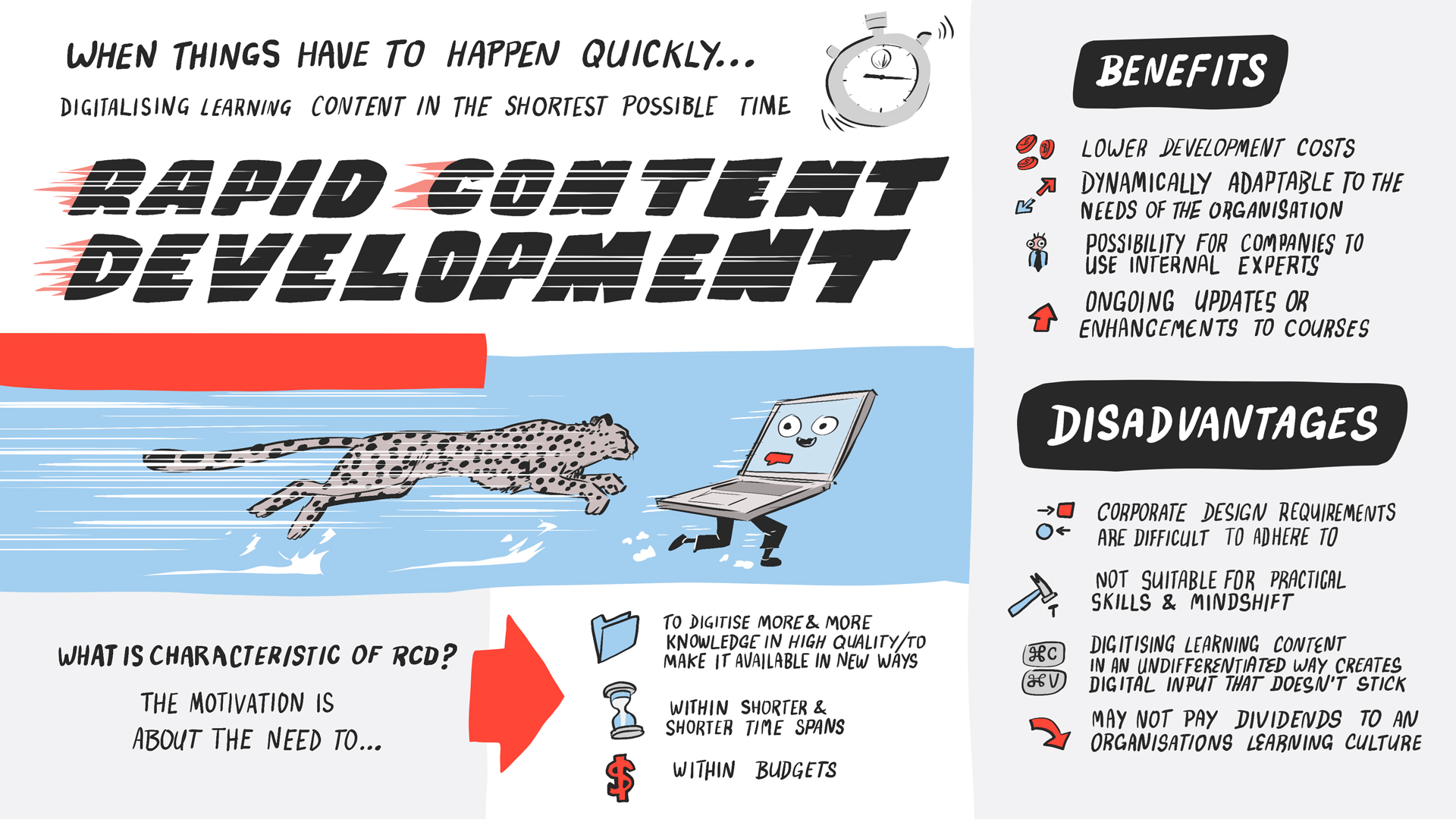

Digital Learning Journey
Reaching the destination with the right blend of formats: Digital learning journeys capitalise on the strengths of each learning format to create a motivating learning experience.

User-generated elearning content meets artificial intelligence
Creating learning content has nerver been that easy. Oliver Nussbaum and his team developed a new AI-driven authoring tool called imc Express.

Contact person
I joined the imc newsroom team in 2021. As a journalist my heart beats for content and storytelling.
I’m excited to figure out how e-learing and digitization affect the future of work. My task is to create content to talk about and I’m always looking for trends.
Privately I love to travel and eat Tapas.
Topics: E-Learning Trends, Corporate Social Responsibility, Press and Influencer Relations

Gamification takes corporate learning to a new level
Why game-based learning boosts motivation
Scientists estimate that if we watched children for a whole day, we would see them play at least seven hours a day. There’s a good reason for that: Children learn from games. Playing improves their motor and cognitive skills and can boost their confidence and self-awareness.
This positive impact is not limited to children. Playing even enables adults to fully exploit their potentials. The brain is revved up to the max during a game.
Many large companies utilise this very fact in the professional development and qualification of their employees. We took a closer look at the most popular types of games, and summarised practical examples for potential applications.

Games motivate us to take the initiative to learn
Motivation is a tricky thing. Thinking back on our school days torturing ourselves memorising vocabulary, few of us will say: “Boy, was I motivated to learn vocabulary!” However, thinking back on a game we thoroughly enjoyed, we will likely remember how motivated we were. Whether that was a board game, video game, smartphone game or a sport, our motivation came from within.

This is called intrinsic motivation. Intrinsic motivation is based on various inner needs, such as the desire for social exchange or a perfectionist ambition to overcome challenges. While playing, we often drift into a flow state, a state of effortless but intensive concentration.
If we are highly motivated and extremely concentrated when learning, not much can go wrong. Indeed, game-based learning has far higher completion rates than other types of training courses.
The most popular types of game-based learning

Drill and practice games:
Suitable for traditional knowledge accumulation, learning facts or cognitive skills. They work best if coupled with right/wrong feedback. One example is the imcBizQuiz App. The training process is similar to a TV quiz show, and employees or teams can compete against each other.

Learning adventures:
A great tool for changing perspectives, helping to convey emotional content and sensitise participants for specific topics.
Learning adventures are based on the genre of point-&-click adventures. They focus on explorative learning and discovery, integrating storytelling – content is linked with an exciting story. imc applied this principle in the adventure game City of Goods created for Linde Materials Handling. During a virtual visit to the warehouse, participants need to discover, document and collect potential optimisations.

Simulation games:
A strong contender for learning practical skills. Knowledge is primarily transferred through interdependencies and the cause-effect principle. Simulations present a simplified picture of reality, which can be changed through the parameters or algorithms in the game code. This type of learning is particularly helpful for movement flows, dangerous actions or machine handling with high cost risks. Flight simulators used in pilot training [LINK to Lufthansa case study] are a well-known example.
A snapshot of the advantages of game-based learning
Learning games lead to changes in our motivation, behaviour or opinion of learning. They can boost cognitive and motor skills.

Moreover, we release dopamine when playing. Being rewarded is a crucial trigger for this hormone release, and rewards like scoring points, moving up the rankings or obtaining digital badges are easy to integrate.
Still, the key factor and most important reason to utilise learning games is and remains the positive impact on motivation. This lowers the drop-out rate for training courses, resulting in greater long-term learning success.
So: Game on! Let’s take e-learning to a new level.

Go for Game-based Learning
We talk about what lies beneath the trend of this playful knowledge transfer method. We explain why it works so well and present 3 application scenarios for learning games in the company.
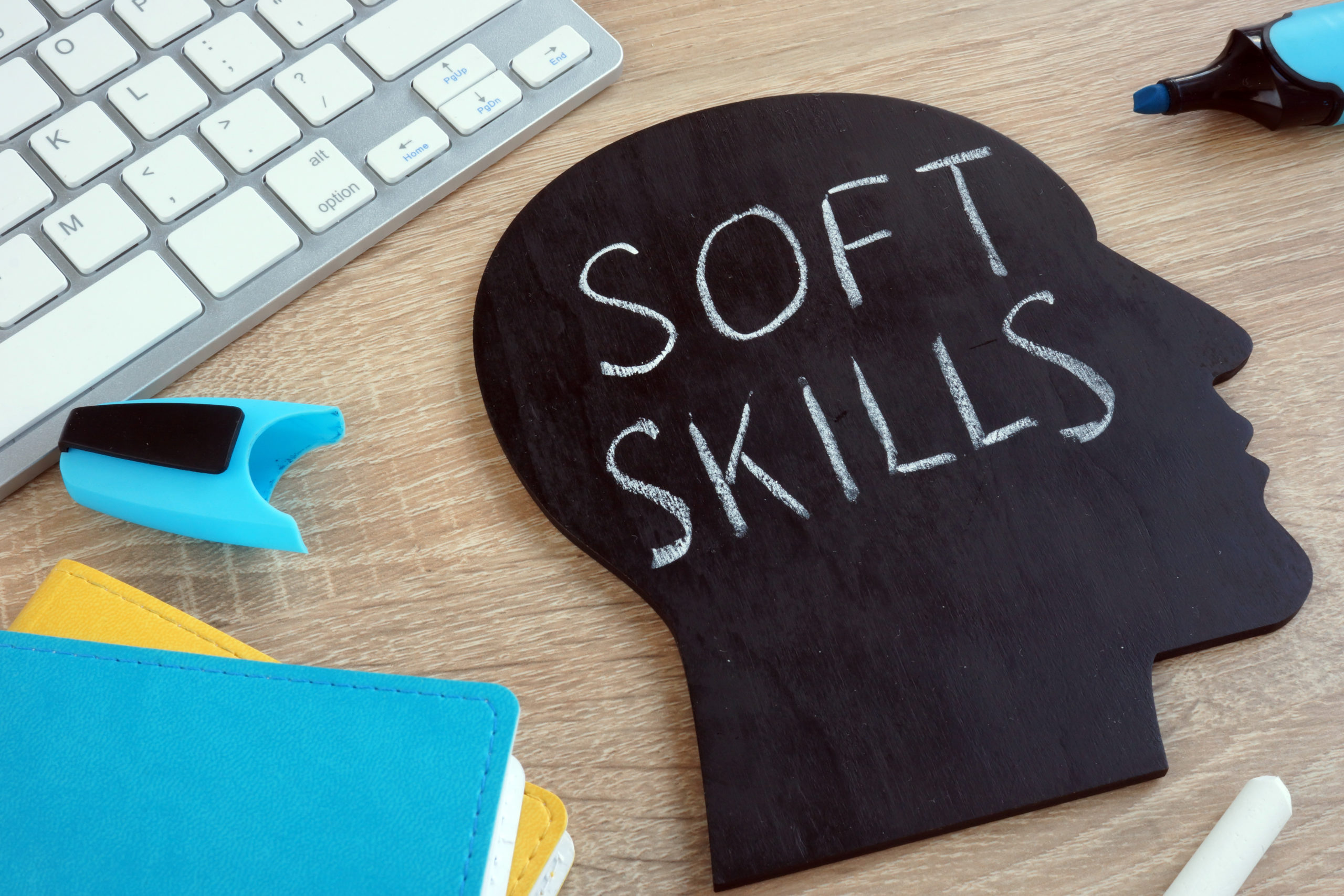
Training soft skills with serious games
Softskills are more important than ever. But how to train them? imc's research team dealt with this challenge in the DEVELOP research project.

Contact person
I joined the imc newsroom team in 2021. As a journalist my heart beats for content and storytelling.
I’m excited to figure out how e-learing and digitization affect the future of work. My task is to create content to talk about and I’m always looking for trends.
Privately I love to travel and eat Tapas.
Topics: E-Learning Trends, Corporate Social Responsibility, Press and Influencer Relations

Digital Learning Journey: I am packing my suitcase. What I take along...
The key items one should never forget on a digital learning journey
Dear E-Learning Punk friends, one year of corona, one year without a holiday. Do you remember back when it was possible to travel the world with ease?
Cocktail in one hand, a good book in the other. Feet in the sand, sun on your face, looking at the roaring sea. That’s how many of us remember the perfect holiday. But there are many other ways to travel: From city breaks through backpacking tours to cruises, there’s something for everyone. The same applies to a learning journey.
What exactly do you need to pay attention to when planning, preparing and going on this journey? Over a nice cocktail, we asked travel guide and expert Eva Lettenbauer to offer some tips and hand you a checklist.

Planning a learning journey – What’s the destination?
Am I going on to explore far-flung places, or do I return to the little finca at the edge of the fishing village in Mallorca? We often go into holiday mode as soon as we start planning our trip. But we do have to decide on the destination.
Similarly, we need to figure out what digital training is meant to achieve for the company. What corporate goals is the training geared towards? What performance goals are being pursued? What exactly do we want to bring across? Should the training focus on background knowledge? Practical application? Sharing experiences? The more clearly you can define where you want to go with this journey, the more effectively you can leverage the different learning formats.

Everyone goes at their own pace on holiday. One person might want to see all of Paris in a day, while the next person would rather watch the hustle and bustle while sitting in a street café in Montmartre. But in the end, both want to take a picture in front of the Eiffel tower.
Defining the goals – the destination – and the contents of a training course is crucial for the success of a learning journey, but so is taking account of the actual learners. They are the target group the learning offers need to be tailored to. If employee requirements are met, they learn more efficiently and learning success is achieved more effectively. Learners should be enabled to close their knowledge gaps to the best of their abilities and learn at their own pace.
Packing the suitcase – What are the essentials?
Finally, the time has come! A quick check to see if last year’s bikini still fits and the sunscreen hasn’t hardened up. Now to the evening outfits – What can I wear when it gets cooler at night? Hang on. Does it even cool down in Bali?
Packing the right stuff for my destination is important. The same applies to training objectives: Each format is suitable for a range of contents and has its own advantages. Virtual classrooms are great for exchanging ideas, while web-based training helps participants to learn theoretical content at their own pace. By packing the right formats, you create a learning journey. This also opens up the opportunity to create small, digestible learning nuggets that are easy to integrate into day-to-day work.

Shoes, clothes, cosmetics, books and, of course, my sunglasses land in my suitcase.
For a learning journey that means the individual modules are defined. You might pack a virtual classroom, game-based learning, on-the-job challenges, social learning, quizzes and fill each with suitable content.
For imc customers, Eva Lettenbauer handles that part. She is a specialist for learning experience design at imc and turns contents into learning content. Above all, the learning journeys she thus creates motivate and aim to activate the learners.
“You want to capitalise on the strengths of each format and cater to different requirements and levels,” says Eva. “Depending on the level, advanced employees might even skip simpler topics. The better the modular system, the more flexible it is, allowing you to tailor it to the specific demands of each learner.”

Let the journey begin
Finally arrived and checked in. A quick look around the hotel, then I’ll see what I can reach on foot. Each journey has different stages. I need to get my bearings before I party in the best club in town with the locals without sticking out as a tourist. ¿Quién sabe? Maybe I even speak a few words of Spanish by the end of my trip?
The learning journey also goes through different stages. First, the learner needs to find their way around. A brief introduction helps to set the tone for the topic and motivate the learner. Then, the theoretical foundation is created as the necessary knowledge is gained. In the next step, the learned material is applied – on-the-job challenges, job aids, tests in quiz format and, of course, social learning can be leveraged to achieve this stage goal. Finally, it all has to be internalised to reach the end of the journey. From this point onwards, the learner can also act as a mentor and support others in their development.

Checklist
The best thing about the travel guide I used for my last holiday was the checklist for must-do sights and experiences in the city. To equally help your digital learning journey become a resounding success, we offer this checklist:
- Define objectives and content
- Distribute content across suitable formats
- Introduce the learner to the training and motivate them
- Create a theoretical foundation
- Apply the knowledge on the job
- Establish an active, self-directed learning culture
Now, we are just as excited about learning journeys as we are about travelling.
Of course, you won’t have to wait long for the next edition of E-Learning Punk, either. We will be all be about the intriguing topic of gamification.
... and if you’re still looking for the right holiday read: We’ve got that covered as well.
![[E-Learning Punk] Exploratory 3D Learning](https://images.im-c.com/wp-content/uploads/2021/02/imc_image_elearningpunk_3Dlearning_hero.jpg)
Exploratory 3D Learning
Not only movies like “Avatar”, but also learning content can benefit from spatially compelling images. We explain the advantages of this professional development trend and present you application scenarios for 3D learning.

Immersive Learning during the Crisis
Immersion is one of the most successful learning methods. Jennifer Fritz, VR expert, points out the potential benefits of using Virtual Reality especially during this unprecedented times.

Contact person
I joined the imc newsroom team in 2021. As a journalist my heart beats for content and storytelling.
I’m excited to figure out how e-learing and digitization affect the future of work. My task is to create content to talk about and I’m always looking for trends.
Privately I love to travel and eat Tapas.
Topics: E-Learning Trends, Corporate Social Responsibility, Press and Influencer Relations
![[E-Learning Punk] Exploratory 3D Learning](https://images.im-c.com/wp-content/uploads/2021/02/imc_image_elearningpunk_3Dlearning_hero.jpg)
Exploratory 3D Learning
Spatial depth brings profound changes to the world of professional development

Digital 3D professional development
Maximum educational value x3
- Interactive and exploratory learning in virtual space
- Independent exploration of a visually appealing world
- Experiencing the immediate consequences of actions
Application scenarios for 3D Learning x3
Onboarding
In large corporations, a 3D map can provide initial orientation to the various corporate divisions which are displayed on a kind of city map, for example.
Product training
A 3D map makes it possible to vividly present products and services to clients, partners and employees in virtual showrooms – and not only during lockdown. AR spots make the integration of virtual and physical worlds turn out particularly well.
Security training
3D Map supports efficient training for appropriate behaviour in crisis scenarios such as a fire in the building.
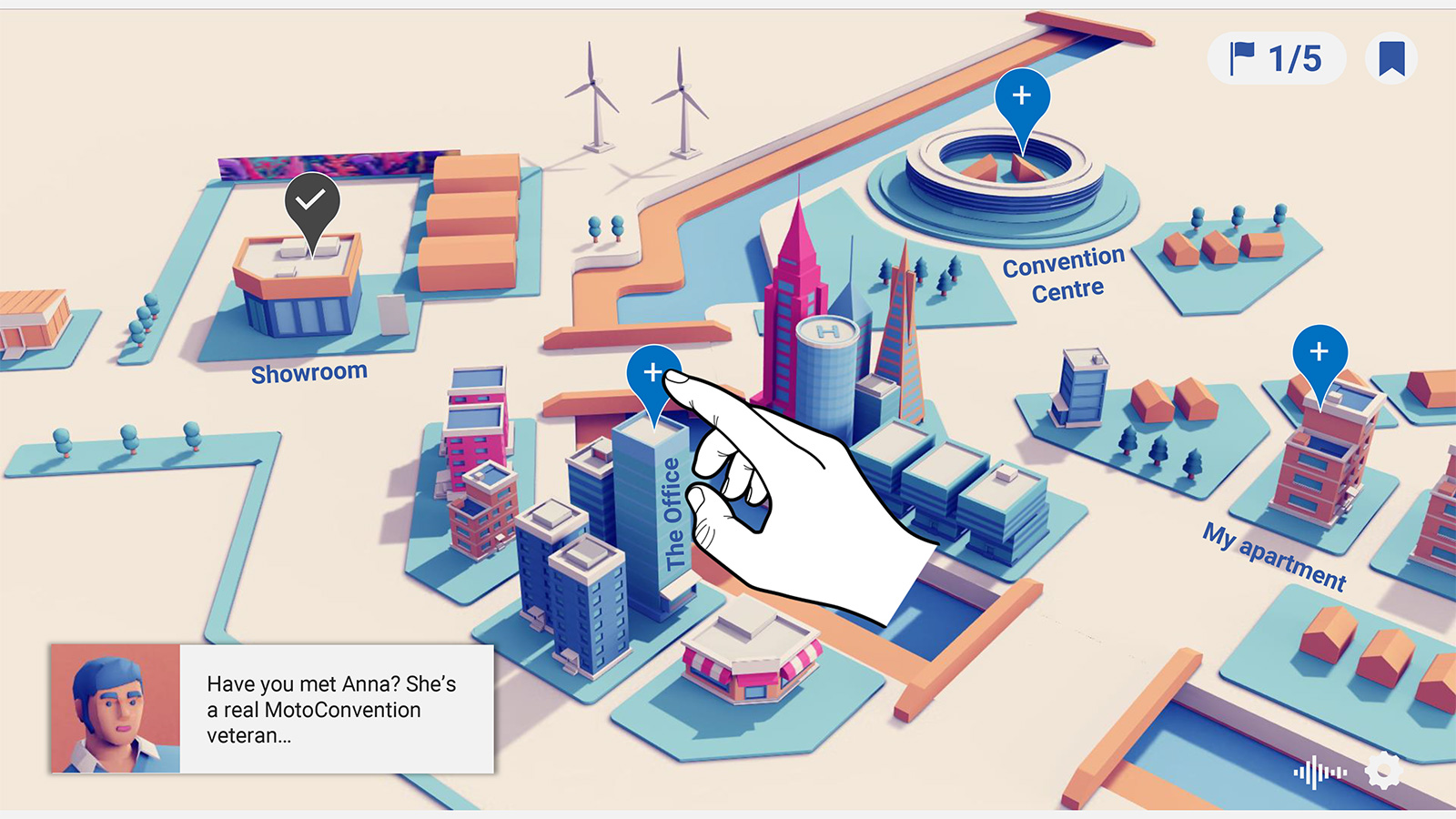
Another concrete example for the use of the imc 3D Map is a virtual world called "Moto City".
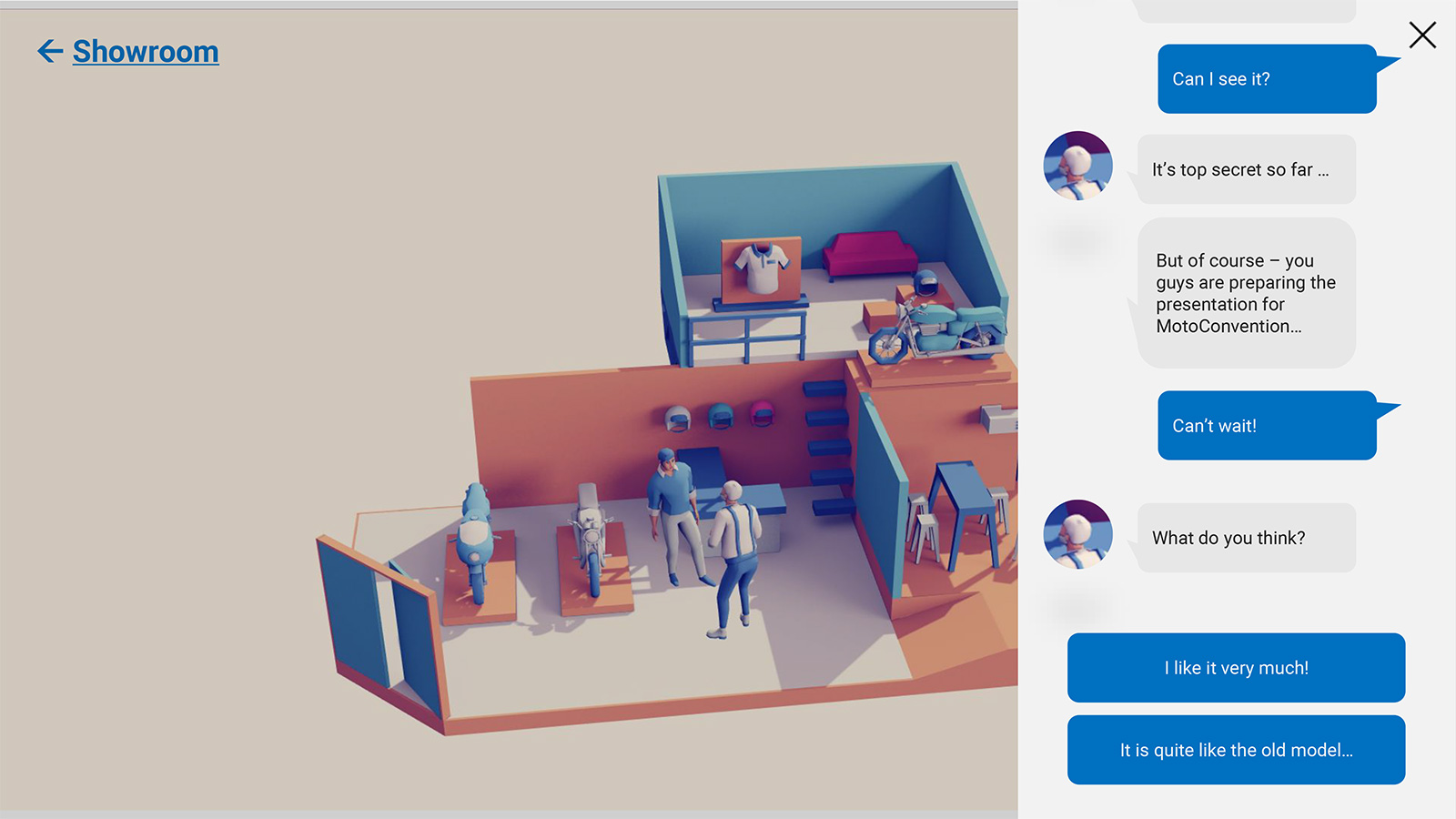
Another concrete example for the use of the imc 3D Map is a virtual world called "Moto City".

Another concrete example for the use of the imc 3D Map is a virtual world called "Moto City".
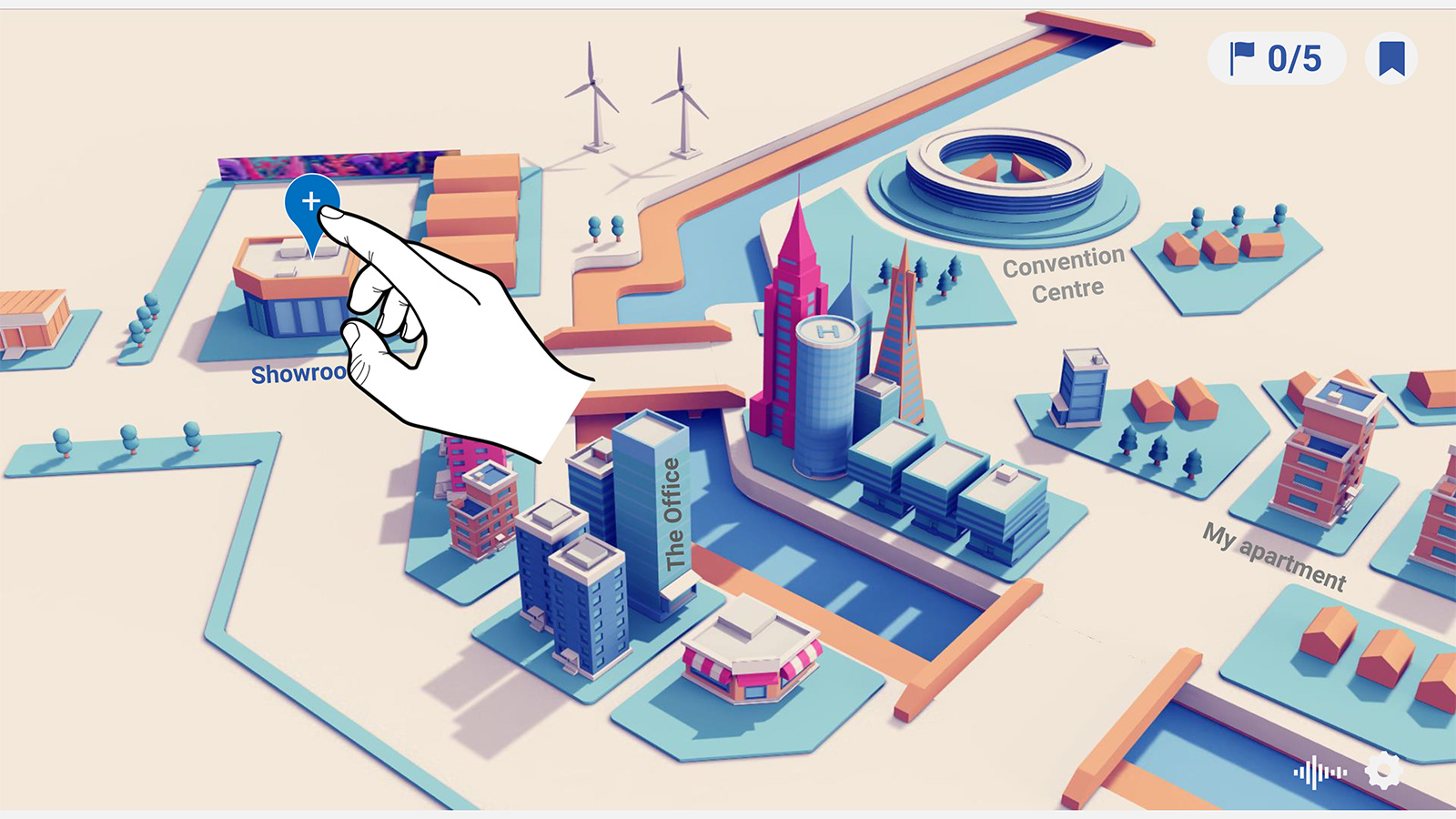
Another concrete example for the use of the imc 3D Map is a virtual world called "Moto City".

Another concrete example for the use of the imc 3D Map is a virtual world called "Moto City".
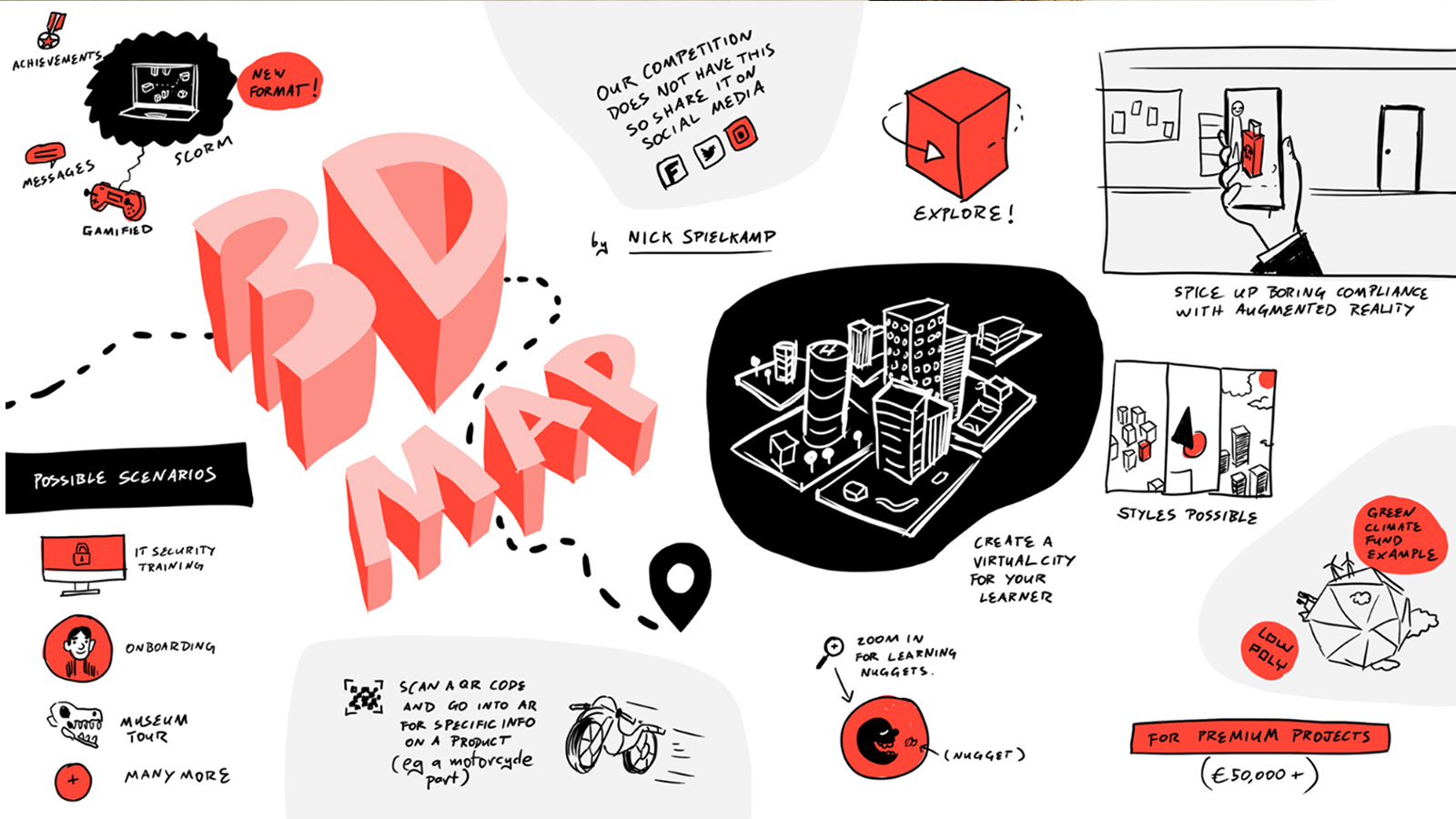

Contact person

e-learning content
E-Learning Punk
You want to stand out from the grey mass of boring web-based trainings (WBTs) and inspire your learners with cool, creative and engaging content? Then you've come to the right place! E-Learning Punk is an article and talk series for all L&D Pros who want to dare something and believe that digital training has to be colourful and loud.
E-learning's not dead. It's time for
Every day new trends in digital training emerge - from game-based learning to mobile learning.
Every month we present a trend in an article, explain and give suggestions and tips on how to implement it in the company.
Every three months, we also discuss the latest and greatest of the last few months with experts in a talk session.

Articles

Cohort-based Learning: Learning Together Beats going it Alone
What does cohort-based learning mean? And why beats learning together going it alone? We have the answers! Learn more...
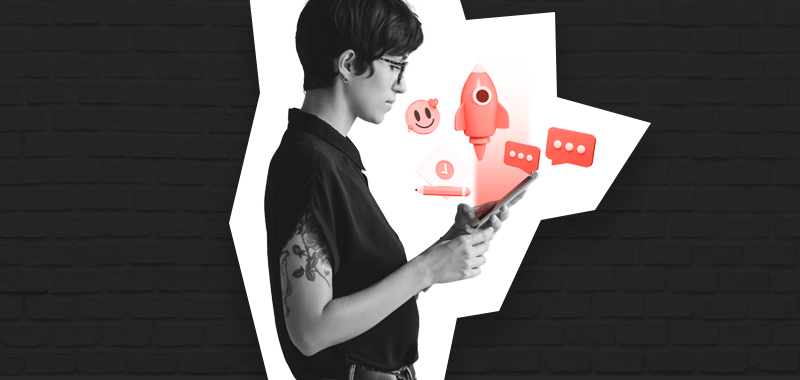
Leadership Training: When the Boss Takes the Learner’s Seat
Today’s managers are expected to have both subject expertise and good people skills. Subject expertise can be learned, obviously, but what about the people stuff – the soft skills?
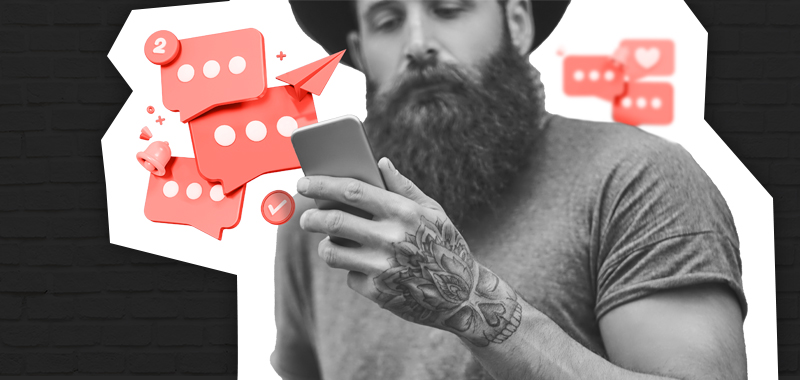
Engaged Learning Through Learning Campaigns
In the same way, a good learning campaign should bring about a mind shift – ideally one that leads to concrete action. Sounds good, but how exactly? The answer is portals. They can provide a highly effective entry point to learning campaigns.
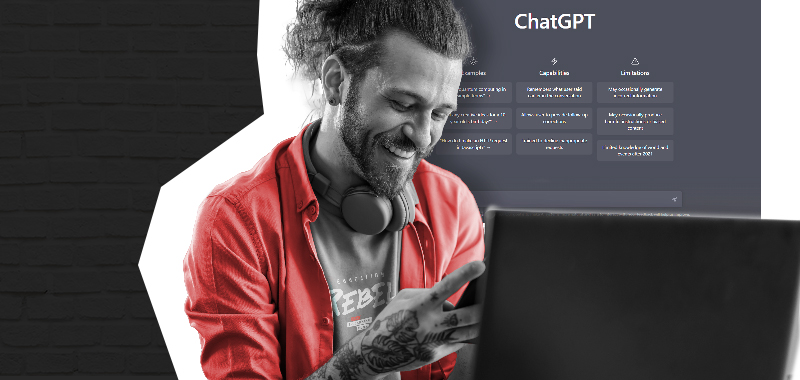
Hype or future: Will ChatGPT revolutionise corporate learning?
Hype or future: We have a look at what ChatGPT means for Corporate Learning

How Tinder and Netflix are shaping the future of learning
In a challenging environment, corporate learning will remain effective only if it is learner-centric and offers formats that are in keeping with learners’ other everyday digital experiences. This is important because learning providers are no longer competing just with other learning providers; they are also competing with dating apps, streaming services and social media.

Using Improvisational Theatre for Corporate Learning
Improv theater accomplishes what is expected of many teams on the job: they move safely through an uncertain situation by constantly adapting to new challenges, relying on each other, and acting spontaneously together. So it makes sense to use the method of improvisational theater in corporate learning as well.

Off-the-shelf content has come a long way from being an uncomfortable compromise
Individual or standard content - which should you choose? You should first ask yourself, "Is the training need or problem I have very specific? Or is it something that many different people in different industries need training on?"

The Power of Emotionally Intelligent Brand Training
Emotionality makes it easier for employees to identify with the brand. This identification has a positive effect on motivation and thus directly on daily work. Emotional brand training also generates brand ambassadors from within the company.

Diversity in e-learning content
Diversity in e-learning is clearly growing in importance. So, in this article, we have put together a summary of key recommendations for companies seeking to incorporate diversity into their learning experience.
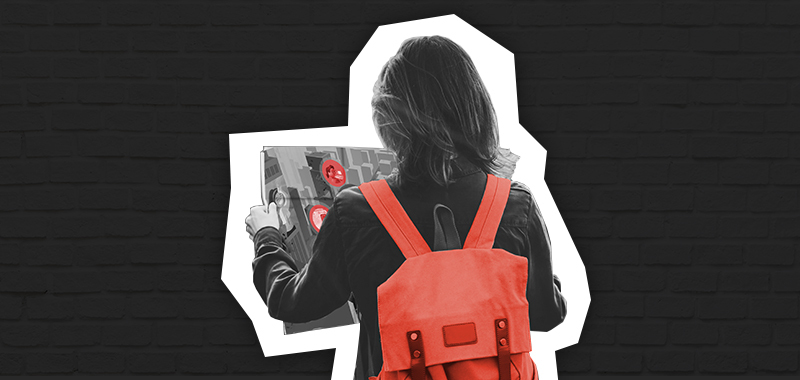
Tips and Tricks for Using 2D Maps in Learning Design
2D cards are old hat? No! We explain the difference between a 2D and a 3D map and show the structure of a 2D map training and its advantages.

E-Learning Content Trends 2022
Out with the old, in with the new. A new year brings new content trends that nobody involved in corporate learning can afford to ignore. Together with Falk Hegewald, Director E-Learning at imc, we are taking a look at the coming year’s crucial topics for companies.
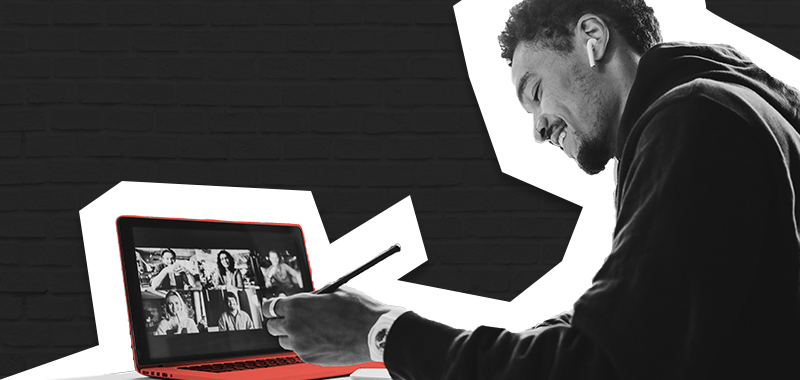
Six vital modules for every digital onboarding concept
This concept turns new content and existing e-learning content into an exciting and creative digital onboarding, even without a learning management system (LMS).

Rapid Content Development
Sometimes things have to happen quickly: This also applies to the creation of digital training. We check why fast creating digital trainings is possible but risky.

Gamification takes corporate learning to a new level
The fact that Game Based Learning works as a motivational booster for e-learning is already rooted in childhood. We have summarized the most common types of games and practical examples of possible applications for you.

Digital Learning Journey
Reaching the destination with the right blend of formats: Digital learning journeys capitalise on the strengths of each learning format to create a motivating and activating learning experience.
![[E-Learning Punk] Exploratory 3D Learning](https://images.im-c.com/wp-content/uploads/2021/02/imc_image_elearningpunk_3Dlearning_thumbnail.jpg)
Exploratory 3D Learning
Not only movies like “Avatar”, but also learning content can benefit from spatially compelling images. We explain the advantages of this professional development trend and present you application scenarios for 3D learning.

Learning with GIFs
Social media is not the only place for GIFs. They can also make learning more vivid and entertaining. We have compiled the most important arguments as well as some tips for the use of GIFs in e-learning for you.

A plea for diverse learning content
Diversity is increasingly becoming a hygiene factor in our working world. E-Learning Content Project Manager Kenny appeals: “The diversity you want must also be reflected in your learning content.”
![[E-Learning Punk] Digital Fastfood](https://images.im-c.com/wp-content/uploads/2020/07/imc_image_elearningpunk_DigitalFastfood_thumbnail_2020_07_07.jpg)
Digital rebellion or digital fastfood?
During the corona crisis companies are catapulted into the digital future. But how much of the current digitalisation efforts in professional development are really sustainable?
![[E-Learning Punk] Virtual Classroom Preview](https://images.im-c.com/wp-content/uploads/2020/06/imc_image_elearningpunk_virtualclassroom_thumbnail_2020_06_05.jpg)
Rock 'n' roll in the virtual classroom
Virtual lessons are on the rise. Find out how the virtual instructions work, what you should pay special attention to and which providers offer virtual classrooms software.

Social Learning While Social Distancing
Social learning is among the top e-learning trends in times of corona and social distancing. Discover three social learning scenarios in the business context and pick up specific tips for realising them.

Immersive Learning during the Crisis
Immersion is one of the most successful learning methods. Jennifer Fritz, VR expert, points out the potential benefits of using Virtual Reality especially during this unprecedented times.

AI Learning
"Artificial intelligence is already further than critics believe." imc board member Dr. Wolfram Jost explains in this interview how far AI actually is using illustrative examples.

The quiz show phenomenon in e-learning
Quiz apps for learning? For sure! We will talk about the success factors of quizzes, introduce areas of application for quiz apps in companies and give you 5 tips for their use in continuing education.

Watch out: Video-based Learning
You'll get to now the benefits of video learning and five major training video formats. Finally, you woll get tips on how to create training videos.

Go for Game-based Learning
We talk about what lies beneath the trend of this playful knowledge transfer method. We explain why it works so well and present 3 application scenarios for learning games in the company.

Mobile Learning Life-Hacks
Smartphones, Twitter & Co. are already part of our everyday lives. With our life-hacks you will create inspriring and engaging content that your team can consume from anywhere.

Blended Learning Recipe
Blended learning is like a balanced meal. In our interview instructional designer Malte Arends reveals his recipe for perfect blended learning, every time.
Talk sessions

Punky Talk #5: Sven R. Becker
Instead of focusing on trends, our E-Learning Punk 2020 Festive Season Special takes a closer look at the e-learning basics: What are the fundamentals companies need to have in place before they can focus their efforts on the latest digital professional development trends? Sven R. Becker, Member of the Board of imc, reveals how to build a solid foundation.

Punky Talk #4: Dr. Fabian Kempf
Dr. Fabian Kempf is Managing Directors of Vitero, a virtual classroom tool provider. The highlight of the Vitero software is its user interface which depicts a virtual room based on the real world. Yet, Dr. Kempf is not a fan of poorly modelled 3D avatars. Find out why.

Punky Talk #3: Katharina Kunz
Katharina, an expert for learning strategies, helps companies link learning content, systems and people to create a working learning ecosystem. She is appealing to those in charge of professional development to provide their learning offer in buffet form.

Punky Talk #2: Roman Rackwitz
Roman Rackwitz has been involved in gamification since 2007 and has already been named one of the top 10 gamification experts in the world. In the E-Learning Punky Talk, he discusses game-based learning, quiz-based learning and AI.

Punky Talk #1: Karlheinz Pape
In this E-Learning Punk Talk, Karlheinz Pape, founder of the German Corporate Learning Community, talks about his favourite topic, self-directed learning, as well as the current digital training trends video-based learning, blended learning and mobile learning.
Like. Follow. Share.
Discuss e-learning trends with us and become part of our lively and interactive social media world. Choose your channel and off you go: tweet, like, post, discuss, share and recommend.
Under the hashtag #eLearningPunk you can find all articles and videos of the series. You can also use the hashtag to post and discuss questions to our talk guests.
Contact person
I joined the imc newsroom team in 2021. As a journalist my heart beats for content and storytelling.
I’m excited to figure out how e-learing and digitization affect the future of work. My task is to create content to talk about and I’m always looking for trends.
Privately I love to travel and eat Tapas.
Topics: E-Learning Trends, Corporate Social Responsibility, Press and Influencer Relations, New Work
I am always happy to receive feedback on the series at [email protected]


Five tips for more fun with e-learning
The company is offering a new e-learning course – does this still have the unfortunate effect of triggering the same feelings in your learners as their annual reminder to have the plaque removed from their teeth? It doesn't have to! We'll give you tips and tricks on how to make learning more fun by using GIFs.
Basics on the topic of GIFs
The first GIF had already been developed as early as 1987, but the idea of GIFs goes back even further. GIFs are, in fact, comparable to the good old flip book. The rapid flow of several individually drawn graphics creates a moving image for the human eye, basically an extremely short video without sound.

Not quite picture, not quite video: GIF stands for Graphic Interchange Format. GIFs are usually animated short clips without sound.
Even after more than 30 years, GIFs still enjoy great popularity, despite their somewhat dated appearance. The popular moving images are widely used, pixelated and limited colour spectrum notwithstanding, because they can be integrated almost anywhere and are easy to create and share. What’s more: Our digital communications, whether on Twitter, WhatsApp or Teams, would certainly be a lot less entertaining and descriptive without GIFs. Speechless? No problem! Joy, sadness, compassion, shame – no matter what feeling you want to convey, you can always find a GIF for it.
Good reasons for using GIFs in learning
Social media is not the only place for GIFs. They can also make learning more vivid and entertaining. We have compiled the most important arguments for the use of GIFs in e-learning for you:
- GIFs visually represent ideas and information in a few seconds
- A GIF is easier to follow than a series of still images
- GIFs usually run in a loop and are also perceived out of the corner of the eye
- GIFs therefore do justice to the attention span of Generation Goldfish (<8 seconds)
- Creating GIFs is much easier than creating high-end video content
- GIFs play automatically on almost any system
- GIFs trigger emotions. The stronger the emotion, the better the memory
- GIFs are mobile-friendly and ideal for micro-learning
tips for more GIF Ingenuity
The use of GIFs in e-learning offers several advantages. Use these short, vivid clips, for example, to make a step-by-step tutorial more entertaining, reinforce a key message, provide feedback, or make comparisons. We have summarised the most important tips for using GIFs in digital training courses for you below:
Tip 1: Offer your goldfish entertainment
Technological progress brings many opportunities and possibilities along with it, but at the same time, it is blamed for decreasing attention spans. You can counter that with GIFs. A good GIF attracts attention and triggers emotions, thus ensuring long-term retention. Boring, colourless GIFs reduce these effects.

Tip 2: No information overload
A rule of thumb should be: Only one theme per GIF. The individual short clips should not be longer than ten seconds and should be intuitively comprehensible. After all, true GIF genius is about explaining even complex facts in a simple and entertaining way (see point 1!).

Tip 3: Don't become Robin Hood. Or: No stealing for a good cause
Besides the popular genre of animal GIFs (keyword cat content), ultra short film scenes make particularly popular GIFs. Before you use a GIF like this from the Internet for your online training courses, however, make sure that you are not violating any copyrights.

Tip 4: Not everyone is familiar with Harry Potter
Consider the cultural background and age of your target audience. For example, if you use a meme from a film, ask yourself: Is my target audience likely to know the film? If a GIF is not clear and understandable, its positive learning effect is significantly reduced.

Tip 5: And the Oscar goes to... Hire a good protagonist
Do you have a recurring character in your other online training courses? Then provide your learners with a common thread and create GIFs with that character as well, for example, to provide feedback on a digital query. Passed the test? -> Rejoicing & Applause. Didn't pass the test? -> Sad face.

During an in-house imc BarCamp, Instructional Designer Stephan Urbanski and Senior Developer Frédéric Macchi presented a more detailed look at the potential of GIFs in the context of learning. The following sketchnote summarises the results of the session and all the important facts about learning with GIFs:
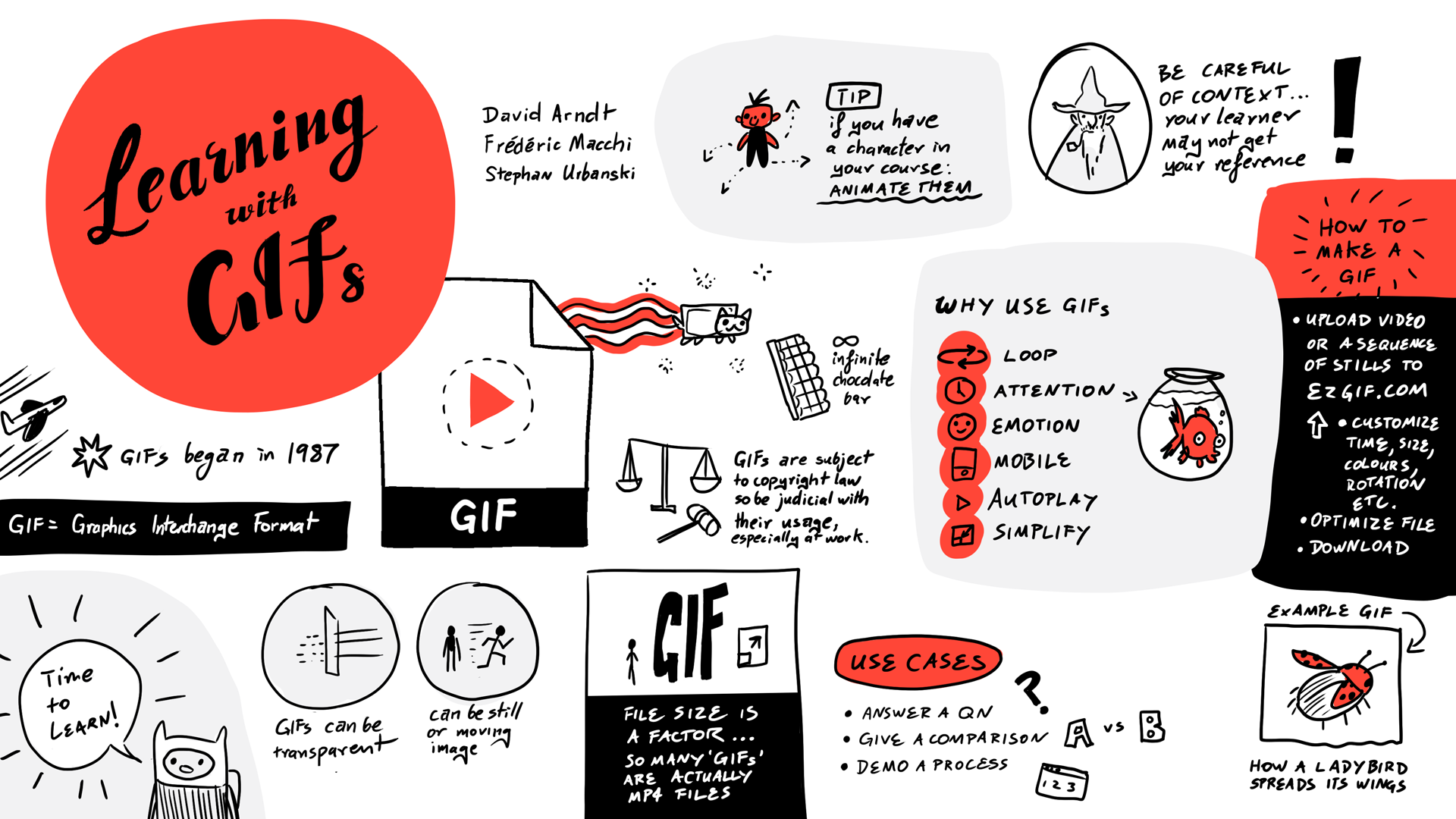
Contact person

![[E-Learning Punk] Christmas Special](https://images.im-c.com/wp-content/uploads/2020/12/imc_image_elearningpunk_Christmas_hero_2020_12_17.jpg)
Punky Talk #5: Sven R. Becker
The imc Board Member talks about basics like learning culture and target group orientation
Our fifth Punky Talk is our 2020 Festive Season Special. As a one-off, it is dedicated to the e-learning basics rather than to trends. After all, countless lists of top trends for the coming year are popping up wherever you look. We would rather use the year-end to ask: What are the fundamentals companies need to have in place before they can focus their efforts on the latest digital professional development trends in 2021?
And who is better placed to answer this question than Sven R. Becker? Sven was appointed to the Management Board of imc in January 2019 after many years of service for the company. During his studies, Sven already worked intensively on e-learning and UX design. Having paid close attention to the developments in the industry for years, he noted: 2020 was not just the year of corona, but also the big moment for “digital literacy”. A digital mindset now exists pretty much everywhere. Consequently, the relevance of e-learning is no longer limited to large corporations and companies in heavily regulated industries.
Sven recommends that anyone seeking to venture into the digital professional development world in the new year take an iterative approach. The important thing now is to get started! When trying to decide whether or not a trend is useful for your company, Sven suggests taking a closer look at the target group.
Sven also talks about costs, grassroots movements and the impact e learning has on corporate success.
Enjoy watching!

To watch this video, marketing cookies must be accepted. Click on the play button to accept. You can find more information in our cookie banner and in the privacy policy.
(Note: under "settings", you can turn on the English subtitles for this interview)
Contact person
